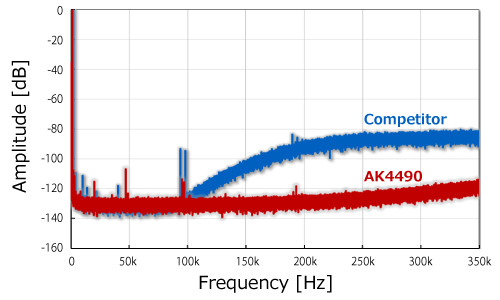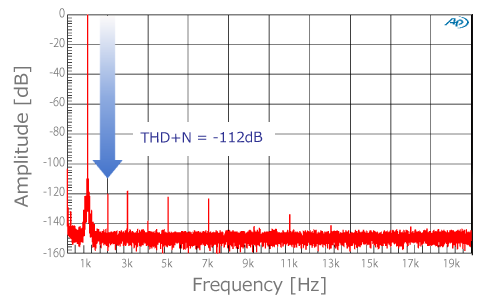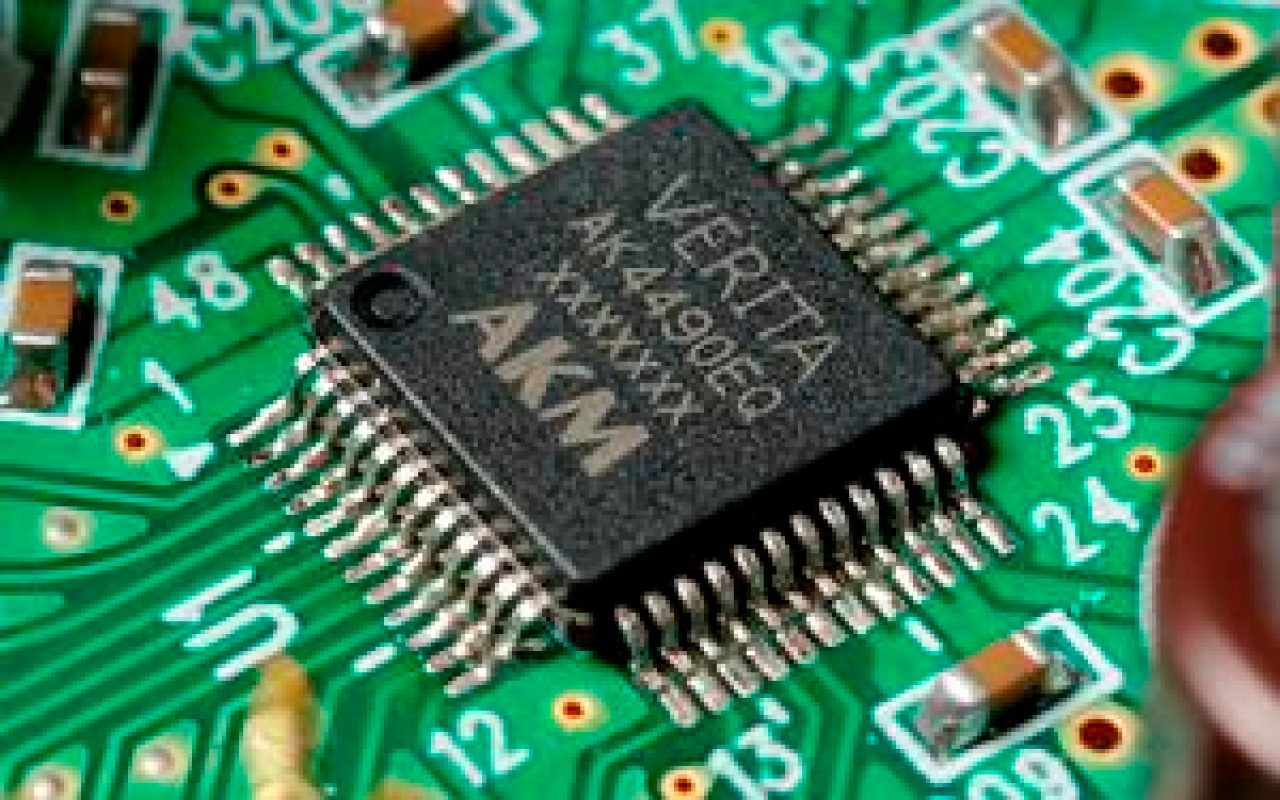Insider's guide to VELVET SOUND
April 2019
Inside Story #01
Tales of VELVET SOUND
A history of surpassing limitations
Insider's guide to the development of VELVET SOUND and acoustic technology
INSIDE
The VELVET SOUND brand launched in 2014, bringing with it a new generation of chip architecture.
The third-generation Premium DAC, the VERITA AK4490, employed AKM’s enhanced low-distortion technology to achieve 120dB SNR, and voltage output performance of -112dB THD+N.
What kind of thought went into the development of the VELVET SOUND family?
Some of our chip designers will share their stories, beginning with the process leading up to the birth of VELVET SOUND.
 This is the VELVET SOUND logo, which debuted in 2014.
This is the VELVET SOUND logo, which debuted in 2014.
Inside Story #01
Ms. Seiko Nakamoto: VELVET SOUND chip designer
◆ When did the concept of the VELVET SOUND brand begin?
The name "VELVET SOUND" was being considered around 2011.
At first, we wanted to use a more technical name that was synonymous with AKM DACs, and we wanted to make it a trademark - not a brand name.
We were already in the middle of developing the technology, building on the idea of refreshing the previous generation's tech, so we wanted to present it in a good way.
Our marketing manager had a strong opinion on the matter: "Launch this as an audio brand, not as the name of a specific technology."
◆ Where does the name VELVET SOUND come from?
We were looking for a name that represented the feeling of the sound that we were aiming for. So we came up with "VELVET."
We looked into what the word "velvet" represents - luxury. Luxury fashion materials, luxury image.
The raw material for velvet is silk. Silk also represents some key aspects of what we aimed to create. Silk is smooth, silk is glossy. Real living material, Real Live Sound.
Velvet is soft, and in order to make something beautiful out of it, you need a skilled craftsman - an artist such as our Audio Meister.
Velvet has a direct relation to music, as it's often used to wipe down LPs before they're played.
So velvet is a perfect fit.
◆ Once you'd settled on the name, were the branded devices ready to go?
No. The challenge for our chip designers at the time was inadequate performance.
The distortion and noise characteristics of AKM's devices were 7 to 8 dB worse than competitors. Our performance was only second or third in the industry; we couldn't launch the brand with those numbers.
Despite the measured performance, I was confident that the sound quality was comparable to our competitors.
Even though I thought "AKM's audio reproduction is better," that's just subjective. Our product had to be number one in terms of measured performance.
◆ Why are you confident in the sound quality?
While I was working on the performance improvements, I was also working on sound quality improvement, and the results showed steady progress.
We looked to the past, to the early 2000s. There was a time when AKM was not particularly recognized for sound quality, even though we were number one in distortion and noise characteristics.
Based on that experience, I knew that just focusing on achieving the numbers would produce disappointing results, sonically. I was convinced that if we could create a technology that both hit the numbers and improved sound quality, that would be a considerable strength.
The project was led by our Audio Meister, Mr. Sato. After repeated experiments, we'd truly achieved a VELVET SOUND - the theory that had been our foundation had become a reality.
◆What kind of performance improvements had been made by the time of the brand's 2014 launch?
The answers are distortion characteristics and out-of-band noise.
The masterpiece of the brand release was AK4490, which achieved significant improvement of distortion characteristics and low out-of-band noise characteristics with our newly-developed low- distortion technology and OSRD (Oversampling Ratio Doubler) technology.
Our breakthroughs with these two aspects of audio performance made it possible for many other new technologies to see the light of day.
I am grateful to everyone in the development team who survived those hard times together.
◆ Did the AK4490's completion lead to a successful brand release?
Yes, it did.
It was integral to the process: "Let's make an audio brand!" "OK, the AK4490 is done." "Great, launch the brand!"
It was really challenging to develop that first device, so I was very happy to see its successful release. At the same time, the pressure to surpass it has increased.
A one-shot success does not make a brand, so the feeling that we must continue to innovate and top ourselves is powerful, and ever-present.
◆ What was your goal for the launch of the VELVET SOUND brand?
I really wanted us to be known throughout the industry for audio that has a truly VEVET SOUND. It's that simple.
When people think of AKM audio products, I want them to think of the world that we feel through sound, and to know that we're constantly working towards bringing that world to them. That's the concept that I want to convey with our newly-refreshed VELVET SOUND brand website.
 Ms. Seiko Nakamoto: VELVET SOUND chip designer
Ms. Seiko Nakamoto: VELVET SOUND chip designer
 [OSRD Technology] AK4490's plot of out-of-band noise at 1 kHz, 0dBFS input. The noise floor up to about 200kHz is flat, enabling more broadband signal re-creation.
[OSRD Technology] AK4490's plot of out-of-band noise at 1 kHz, 0dBFS input. The noise floor up to about 200kHz is flat, enabling more broadband signal re-creation.
 [Low-distortion technology] AK4490's spectrum plot at 1kHz, 0dBFS input Premium DAC, the AK4490, employed newly-developed low-distortion technology to achieve 120dB SNR, and performance of -112dB THD+N.
[Low-distortion technology] AK4490's spectrum plot at 1kHz, 0dBFS input Premium DAC, the AK4490, employed newly-developed low-distortion technology to achieve 120dB SNR, and performance of -112dB THD+N.
 VELVET SOUND was born in 2014 with the launch of the 3rd generation flagship DAC, VERITA AK4490EQ.
VELVET SOUND was born in 2014 with the launch of the 3rd generation flagship DAC, VERITA AK4490EQ.

